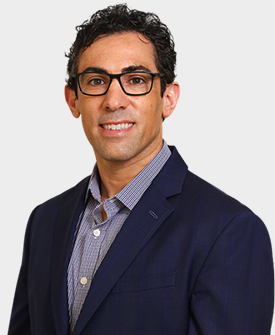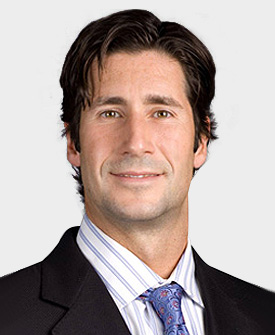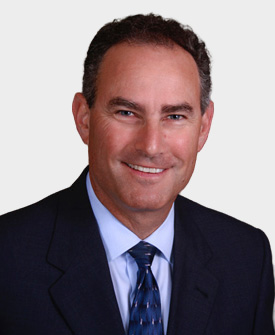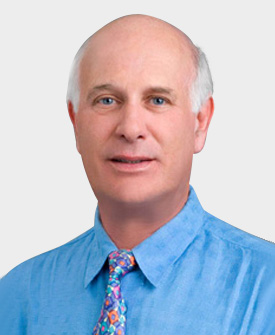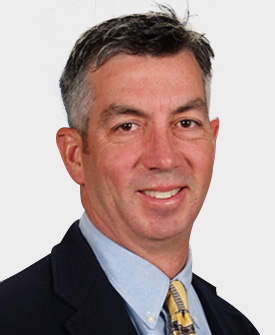The shoulder is a complex network of structures that allows more range of motion and mobility than any other joint in the body. This flexibility makes the shoulder joint susceptible to instability and injury.
Shoulder Anatomy
- The ball and socket joint. The head of the upper arm bone fits into the socket of the shoulder blade. Both the ball and socket are lined with cartilage.
- The shoulder capsule is a band of ligaments surrounding the joint to keep all the parts together and offers mobility.
- The rotator cuff is a large tendon made of four muscles that wrap around the shoulder capsule and hold the joint together.
- The bursa is a lubricating sac between the rotator cuff and the top of the shoulder, which helps the rotator cuff glide easily.
The Orthopedic Evaluation
A board-certified orthopedic surgeon at Orthopedic Specialists of North County will conduct a complete evaluation of your shoulder, a medical evaluation, and physical exam to assess range of motion, weakness, instability and pain. Diagnostic imaging tests will be needed. The results will be assessed, and treatment recommendations will be made and discussed with you, based on your specific condition.
Non-Invasive Treatments
Treatments are geared to pain relief and restoration of range of motion. The first approach is to treat with RICE: Rest, Ice, Compression and Elevation. Exercise and physical therapy can strengthen the joint and maintain function. Pain medications and steroid (Cortisone) injections can help reduce inflammation which causes pain, stiffness and swelling. When the condition doesn’t respond to noninvasive treatments, or is not amenable to RICE, shoulder surgery may be recommended.
Minimally Invasive Surgery
Arthroscopy is a minimally invasive procedure to diagnose, and repair shoulder problems. Tiny incisions are created through which a tiny camera is inserted to see the joint. If repair is needed, specially designed small surgical instruments will be used to repair the problem. Arthroscopy is an outpatient procedure.
Most patients who have shoulder arthroscopy do not have complications. Risks include the usual risks of surgery- bleeding, blood clots, infection, and damage to blood vessels or nerves. Generally arthroscopy is very successful at easing pain and stiffness, with less complications, and faster recovery than open surgery.
Open Surgery
Open surgery may be recommended when the patient and the surgeon agree it is better than arthroscopy and depends on the damage to the joint. It can be accomplished through 1-2” incisions. The key to recovery is rehabilitation. The choice of treatment approach depends on the severity of the conditions and diseases.
Conditions and Treatments
- Rotator Cuff (RTC) Tear: The RTC is a group of tendons that provides the ability to lift and rotate the arm and stabilizes the ball of the shoulder joint to keep it in its socket. Damage is caused by falls and chronic wear and tear. Partial tears can cause chronic inflammation and pain. Full thickness tears are usually due to impingement, heavy lifting and falls.
- Frozen Shoulder: Chronic inflammation of the shoulder ligaments causes them to thicken and stiffen which restricts mobility, making everyday activities painful. The cause is not known but has been associated with other diseases and immobilization due to surgery or an injury.
- Shoulder Dislocation: When the arm comes out of its socket due to a sudden injury or overuse. When the shoulder dislocates repeatedly it causes chronic instability.
- Shoulder Separation: When shoulder ligaments tear, the attachment releases and the collarbone can be dislocated. It is caused by trauma to the joint. It is commonly due to a fall on the shoulder.
- SLAP Tear: SLAP refers to a specific tear in the cartilage ring (labrum) that surrounds the socket to stabilize the shoulder. SLAP tears are due to trauma, and repetitive shoulder motions often found in athletes.
- Bankart Tears or Hill Sachs Lesions: Result from a shoulder dislocation which tears the labrum and rips the ligaments from the socket, creating a sensation of instability and ache. It also makes the patient more vulnerable to repeat dislocations.
- Clavicle Fractures: Fractures of the collarbone are common when falling directly on the shoulder. Most are treated with slings or splints and other noninvasive methods. But severely displaced fractures may require surgery.
- Humeral Head/Neck Fractres: Fractures of the head of the arm bone are common in the elderly with osteoporosis and occur as a result of falls with an outstretched arm. This is a serious condition that may require open surgery and possibly a shoulder joint replacement.
- Arthritis: Osteoarthritis and rheumatoid arthritis can destroy the shoulder, causing degeneration and tearing of the rotator cuff.
Orthopedic Specialists of North County serves patients in Greater San Diego County including Oceanside, Vista, San Marcos, Escondido, Carlsbad, and Solana Beach. Schedule a consultation and learn how our skilled surgeons can help you regain mobility and live pain free.


